Search Result
Results for "
pH 5.0
" in MedChemExpress (MCE) Product Catalog:
2
Biochemical Assay Reagents
2
Isotope-Labeled Compounds
| Cat. No. |
Product Name |
Target |
Research Areas |
Chemical Structure |
-
- HY-B1610J
-
|
|
Biochemical Assay Reagents
|
Others
|
|
Sodium citrate buffer, 0.5M, pH 5.0, is a commonly used buffer with main components are citric acid and sodium hydrogen phosphate. Sodium citrate buffer, 0.5M, pH 5.0 is used in heat induced epitope retrieval (HIER) methods to reverse the loss of antigenicity that occurs with some epitopes in formalin-fixed paraffin embedded tissues. Sodium citrate buffer, 0.5M, pH 5.0 is the preferred solution for most antibodies . Sodium citrate buffer, 0.5M, pH 5.0 is used as solution for captisol in animal tumor models .
|
-
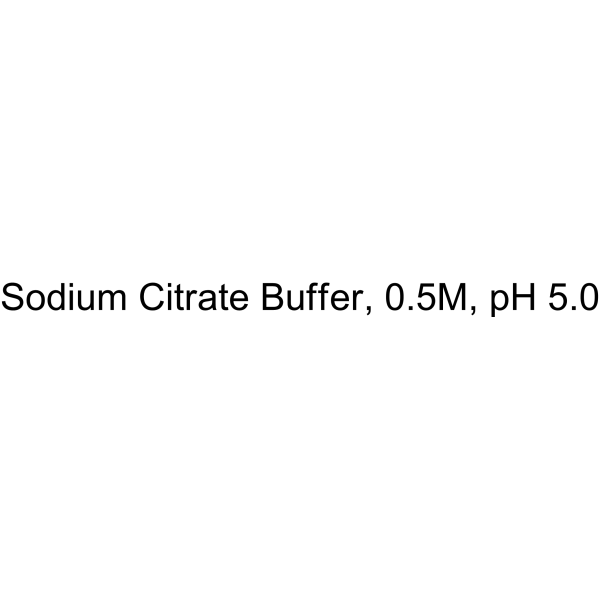
-
- HY-100230A
-
|
|
Potassium Channel
|
Others
|
|
ML133 hydrochloride is a selective Kir2 family channels inhibitor, with an IC50 of 1.8 μM at pH 7.4 and 290 nM at pH 8.5 .
|
-

-
- HY-148530
-
|
|
PROTACs
CDK
|
Cancer
|
|
YX-2-107 is a PROTAC (IC50= 4.4 nM) that selectively degrades CDK6. YX-2-107 effectively inhibits RB phosphorylation and FOXM1 expression in vitro and inhibits the development of Ph + ALL in rats. YX-2-107 can be used in the study of Ph chromosome-positive (Ph +) acute lymphoblastic leukemia (ALL) .
|
-
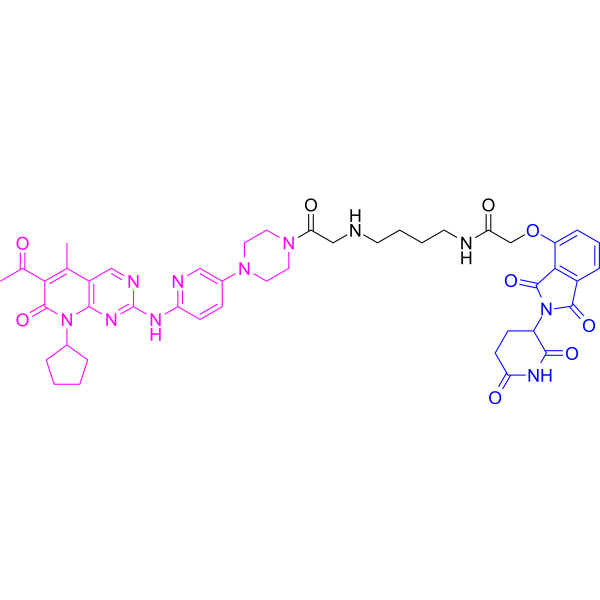
-
- HY-N2383
-
|
(1R,2S,3S,4S,6R)-4-Amino-6-(hydroxymethyl)cyclohexane-1,2,3-triol
|
Glucosidase
|
Metabolic Disease
|
|
Validamine competitively inhibits β-glucosidase in a pH-dependent and dose-dependent manner, with an IC50 value of 2.92mM, and the maximum inhibitory ability is at the optimum pH value of this enzyme .
|
-
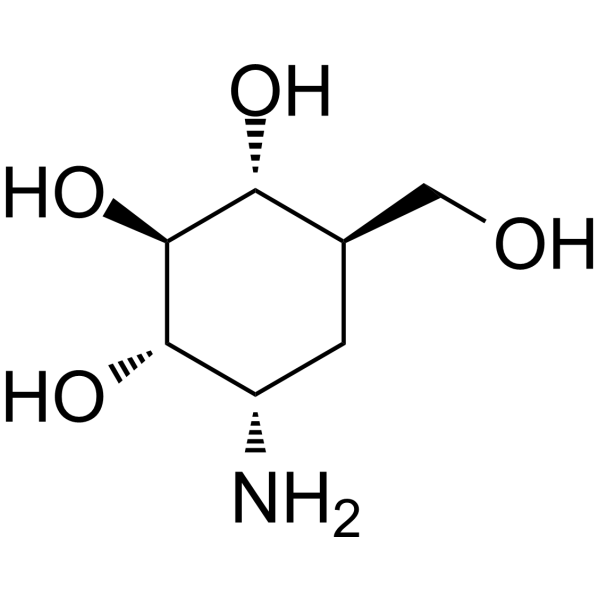
-
- HY-10403A
-
|
|
p38 MAPK
|
Inflammation/Immunology
|
|
(aS)-PH-797804 is a selective p38 MAPK inhibitor with IC50 values for p38 α /β of 26 nM and 102 nM, respectively. (aS)-PH-797804 has anti-inflammatory activity .
|
-
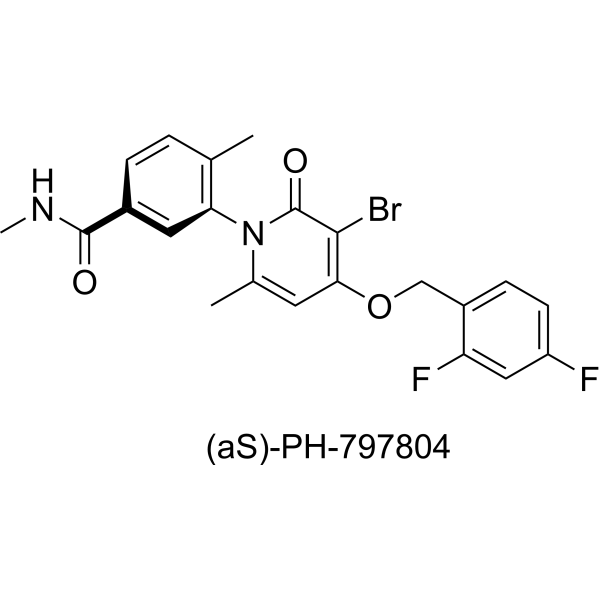
-
- HY-149669
-
|
|
PI3K
HDAC
Apoptosis
|
Cancer
|
|
PH14 is a dual PI3K/HDAC inhibitor with IC50 values of 20.3 nM and 24.5 nM for PI3Kα and HDAC3, respectively. PH14 has antiproliferative activity and also induces apoptosis in Jeko-1 cells. PH14 can be used in cancer research, such as lymphoma .
|
-
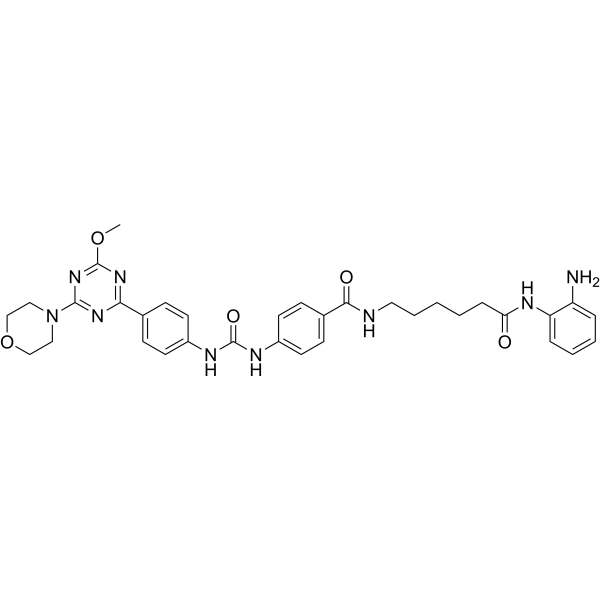
-
- HY-107757
-
|
|
Sodium Channel
|
Neurological Disease
|
|
GMQ is a ASIC (acid-sensing ion) channel activator with an EC50 value of 1.83 mM for ASIC3 at pH 7.4. GMQ opens only ASIC3 but no other ASICs at pH 7.4. GMQ can be used for neurological disease research .
|
-
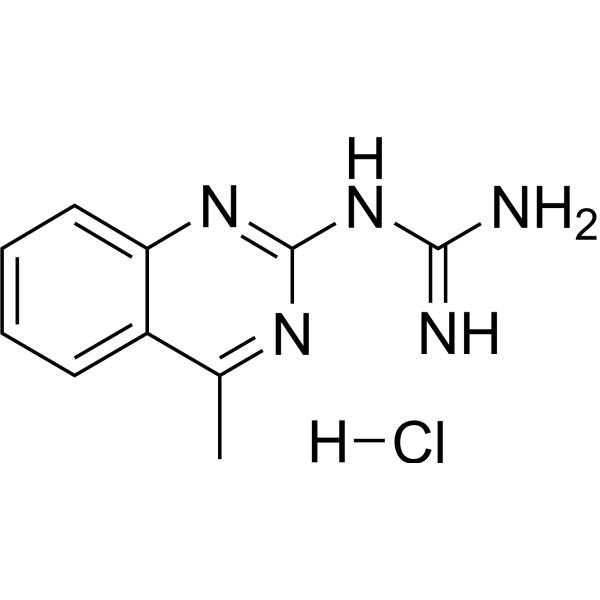
-
- HY-10403
-
-
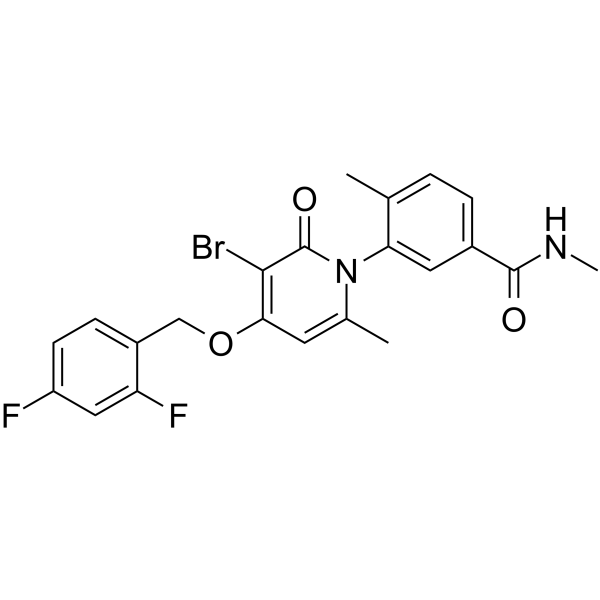
-
- HY-105276
-
|
A-64662
|
Renin
|
Cardiovascular Disease
|
|
Enalkiren (A-64662) is a potent dipeptide renin inhibitor with an IC50 of 0.78 nM in a purified renal renin-angiotensinogen system (pH=6.0). Enalkiren suppresses renin activity, and also reduces systolic and diastolic blood pressure. Enalkiren can be used to research essential hypertension .
|
-
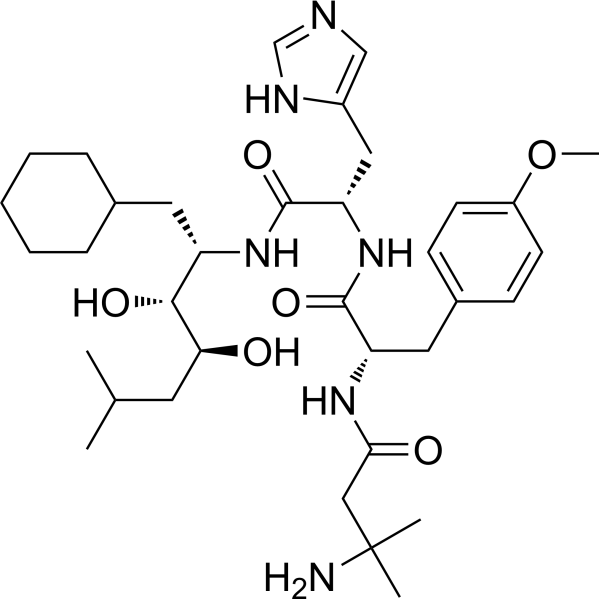
-
- HY-120742
-
|
|
Indoleamine 2,3-Dioxygenase (IDO)
|
Cancer
|
|
MMG-0358 is a potent IDO1 inhibitor. MMG-0358 shows IC50 values of 2 nM in a cellular assay on mIDO1, 80 nM in a cellular assay on hIDO1, 330 nM in an enzymatic assay on hIDO1 at pH 6.5, and 71 nM in an enzymatic assay on hIDO1 at pH 7.4 .
|
-

-
- HY-12654
-
|
BAY 85-3934
|
HIF/HIF Prolyl-Hydroxylase
|
Cardiovascular Disease
|
|
Molidustat (BAY 85-3934) is a novel inhibitor of hypoxia-inducible factor prolyl hydroxylase (HIF-PH) with mean IC50 values of 480 nM for PHD1, 280 nM for PHD2, and 450 nM for PHD3.
|
-

-
- HY-148825
-
-
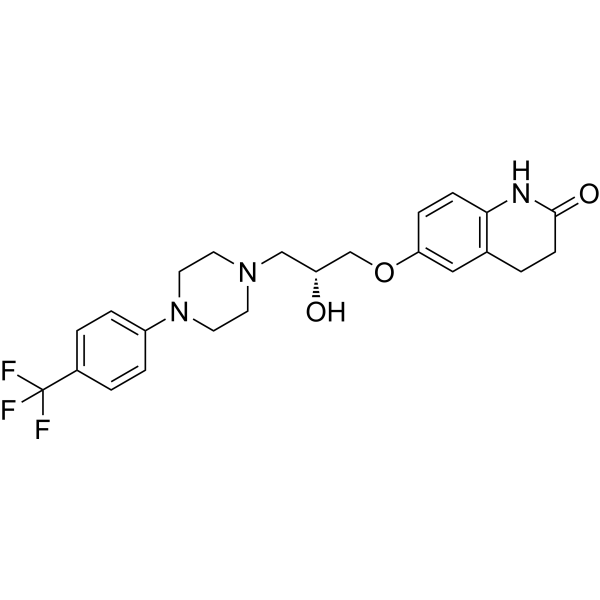
-
- HY-133044
-
|
|
PROTAC Linkers
|
Cancer
|
|
Boc-Pip-alkyne-Ph-COOH is a PROTAC linker, which refers to the alkyl/ether composition. Boc-Pip-alkyne-Ph-COOH can be used in the synthesis of a series of PROTACs, such as ARD-266 (HY-133020). ARD-266 effectively induces degradation of androgen receptor (AR) protein in AR-positive LNCaP, VCaP, and 22Rv1 prostate cancer cell lines with DC50 values of 0.2-1 nM . Boc-Pip-alkyne-Ph-COOH is a click chemistry reagent, it contains an Alkyne group and can undergo copper-catalyzed azide-alkyne cycloaddition (CuAAc) with molecules containing Azide groups.
|
-

-
- HY-D1200
-
|
Solvent Green 1
|
Fungal
Parasite
|
Others
|
|
Malachite Green Carbinol base (MGOH, MGCB) is a derivative of Malachite green (MG) with not fluorescence. Malachite green carbinol base (MGOH, MGCB), as a pH regulation reagent,MGCB molecule could release OH - under UV light irradiation and generate a progressive shift in pH values. MGCB solution turns from colorless to deep green rapidly when exposed to a high-pressure UV lamp (500 W, 50 W/cm) .
|
-
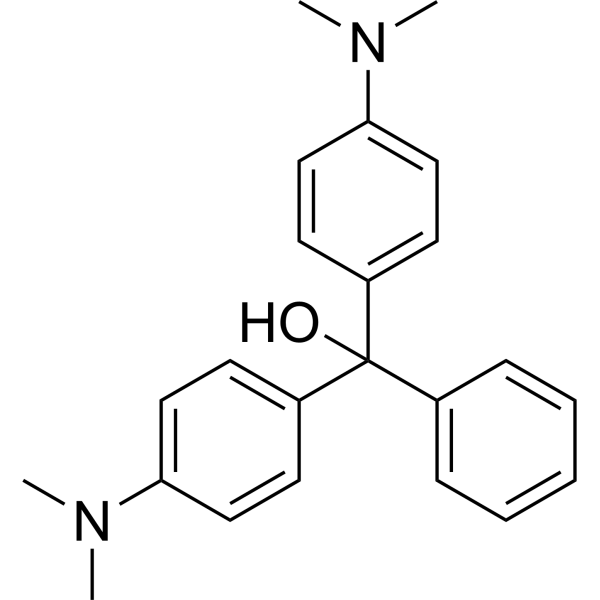
-
- HY-15369
-
|
|
Akt
Apoptosis
|
Cancer
|
|
FPA-124, a cell-permeable copper complex, is a selective Akt inhibitor with an IC50 of 0.1 μM. FPA-124 interacts with both the pleckstrin homology (PH) and the kinase domains of Akt. FPA-124 induces apoptosis .
|
-
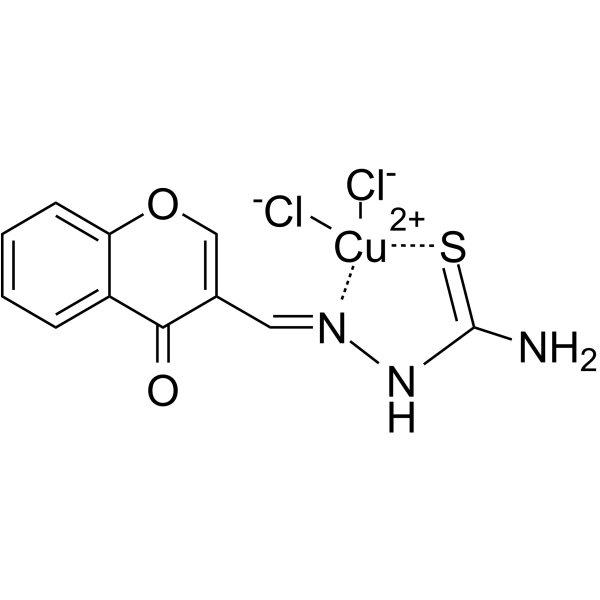
-
- HY-P5780
-
|
|
Sodium Channel
|
Neurological Disease
|
|
π-TRTX-Hm3a is a 37-amino acid peptide isolated from Togo starburst tarantula (Heteroscodra maculata) venom. π-TRTX-Hm3a pH-dependently inhibits acid-sensing ion channel 1a (ASIC1a) with an IC50 of 1-2 nM and potentiates ASIC1b with an EC50 of 46.5 nM .
|
-

-
- HY-14179
-
PPQ-102
3 Publications Verification
CFTR Inhibitor
|
CFTR
|
Others
|
|
PPQ-102 (CFTR Inhibitor) is a reversible CFTR inhibitor that completely inhibits CFTR chloride currents (IC50 ~90 nM). PPQ-102 is not affected by membrane potential-dependent cell allocation or blocking efficiency (uncharged at physiological pH) and effectively prevents cyst enlargement in polycystic kidney disease .
|
-

-
- HY-D0876
-
|
|
Biochemical Assay Reagents
|
Others
|
|
POPSO is a zwitterionic buffer, increases osmolality and shows marked inhibition of anion uniport. POPSO inhibits chloride uniport with an IC50 value of 24 mM. POPSO enhances copper uptake and toxicity in alga, impairs mitochondrial inner membrane. The working pH range of POPSO sesquisodium salt is 7.2-8.5 .
|
-
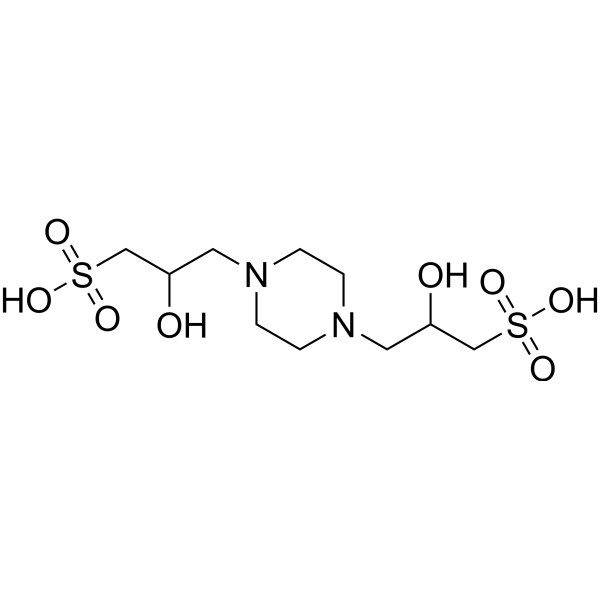
-
- HY-W176012
-
|
|
Others
|
Metabolic Disease
|
|
Glycolate oxidase-IN-1(compound 26), a salicylic acid derivative, is a glycolate oxidase (GO) inhibitor with an IC50 of 38.2 μM. Glycolate oxidase-IN-1 has the ability to reduce oxalate production in hyperoxalate hepatocytes and can be used in the study of primary hyperoxaluria type 1 (PH1) .
|
-
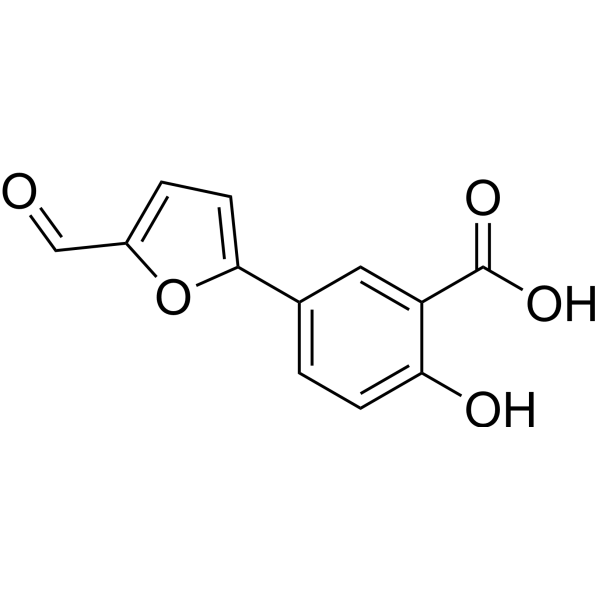
-
- HY-111549
-
|
|
Others
|
Cancer
|
|
Bragsin1 is a potent, selective and noncompetitive inhibitor of the ArfGEF BRAG2, inhibits Arf GTPase activation, with an IC50 of 3 μM. Bragsin1 binds to PH domain of BRAG2, and is a noncompetitive interfacial inhibitor. Bragsin1 has no effect on the Sec7 domain of human ArfGEFs. Anti-cancer activity .
|
-

-
- HY-15351
-
|
NSC 675186
|
HIV
|
Infection
|
|
UC-781 (NSC 675186) is a highly potent and selective nonnucleoside reverse transcriptase inhibitor (NNRTI) of HIV-1 with an IC50 value of 5 nM. UC-781 is stable under low PH or various temperatures conditions. UC-781 has antiviral activity and resistance .
|
-

-
- HY-N8502
-
|
|
Fluorescent Dye
|
Cancer
|
|
Urdamycin A (Compound 3b) is an angucycline antibiotic that can be isolated from Streptomyces fradiae. Urdamycin A is an orange indicator with a change of the color to ultramarine blue at pH 7.7. Urdamycin A has anticancer activity with IC50s of 2.4 and 0.55 μg/mL in proliferation and stem cell assays, respectively .
|
-
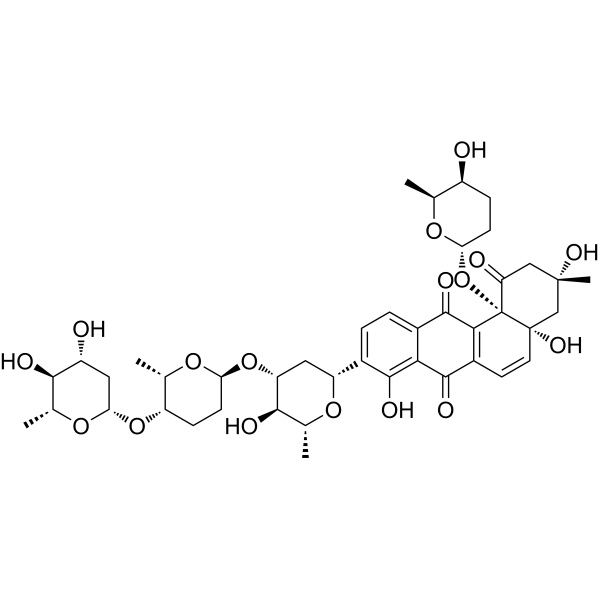
-
- HY-12914
-
|
|
TRP Channel
|
Neurological Disease
Inflammation/Immunology
|
|
V116517 is a potent, orally active transient receptor potential vanilloid (TRPV1) antagonist. V116517 shows potent activity in inhibiting both capsaicin (CAP)- and acid (pH 5)-induced currents in rat DRG neurons expressing native TRPV (IC50=423.2 nM for CAP; IC50=180.3 nM for acid). V116517 can be used for the research of pain .
|
-

-
- HY-111550
-
|
|
Others
|
Cancer
|
|
Bragsin2 is a potent, selective and noncompetitive nucleotide exchange factor BRAG2 inhibitor, with an IC50 of 3 μM. Bragsin2 binds at the interface between the PH domain of BRAG2 and the lipid bilayer, leads BRAG2 unable to activate lipidated Arf GTPase. Bragsin2 affects breast cancer stem cells .
|
-
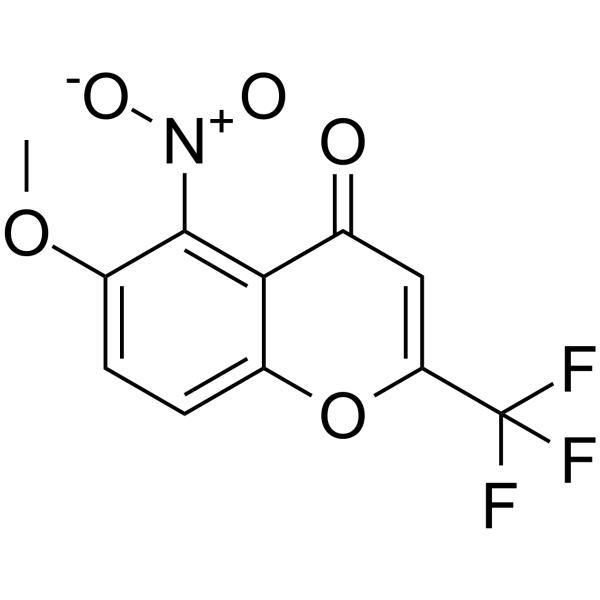
-
- HY-128144
-
|
|
Lipase
|
Metabolic Disease
|
|
Lalistat 2 is an inhibitor of many lipases especially Lysosomal acid lipase (LAL, IC50 = 152 nM), which is a key enzyme that degrades neutral lipids at an acidic pH in lysosomes. Lalistat 2 is commonly used to investigate the cell-specific functions of LAL and LAL deficiency in vitro, as well as specifically measure LAL activity in human blood samples or cells .
|
-
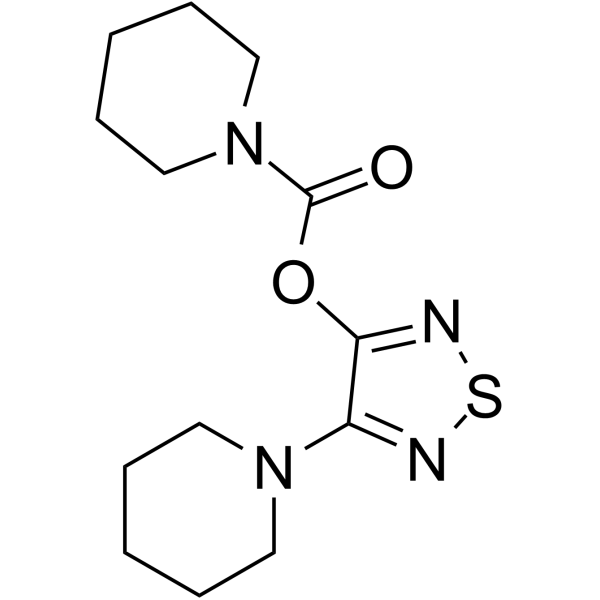
-
- HY-P5174
-
|
|
Sodium Channel
|
Neurological Disease
|
|
MitTx is a complex formed by MitTx-α and MitTx-β. MitTx is an ASIC1 channel activator with EC50 values of 9.4 and 23 nM for ASIC1a and ASIC1b isoforms, respectively. MitTx is highly selective for ASIC1 isoforms at neutral pH. Under acidic conditions, MitTx greatly enhances proton-evoked ASIC2a channel activation .
|
-

-
- HY-15295
-
|
TAK-438
|
Proton Pump
|
Metabolic Disease
|
|
Vonoprazan Fumarate (TAK-438), a proton pump inhibitor (PPI), is a potent and orally active potassium-competitive acid blocker (P-CAB), with antisecretory activity. Vonoprazan Fumarate inhibits H +,K +-ATPase activity in porcine gastric microsomes with an IC50 of 19 nM at pH 6.5. Vonoprazan Fumarate is developed for the research of acid-related diseases, such as gastroesophageal reflux disease and peptic ulcer disease .
|
-
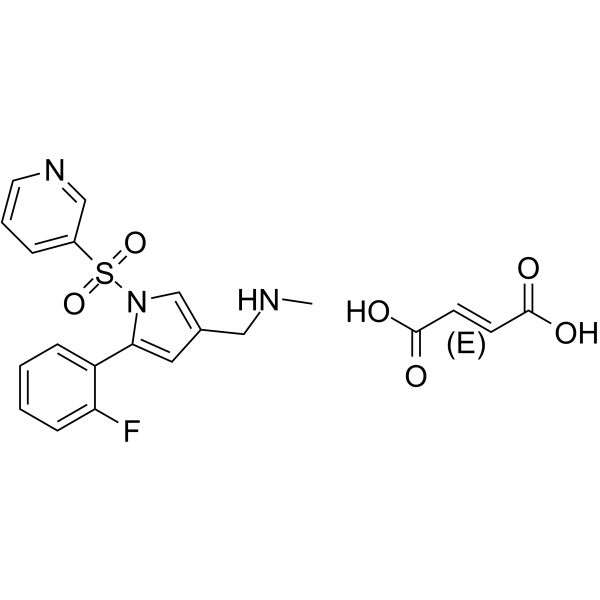
-
- HY-17507
-
|
BY1023; SKF96022
|
Proton Pump
Autophagy
Apoptosis
Bacterial
|
Inflammation/Immunology
Cancer
|
|
Pantoprazole (BY10232) is an orally active and potent proton pump inhibitor (PPI) . Pantoprazole, a substituted benzimidazole, is a potent H +/K +-ATPase inhibitor with an IC50 of 6.8 μM. Pantoprazole improves pH stability and has anti-secretory, anti-ulcer activities. Pantoprazole significantly increased tumor growth delay combined with Doxorubicin (HY-15142) .
|
-
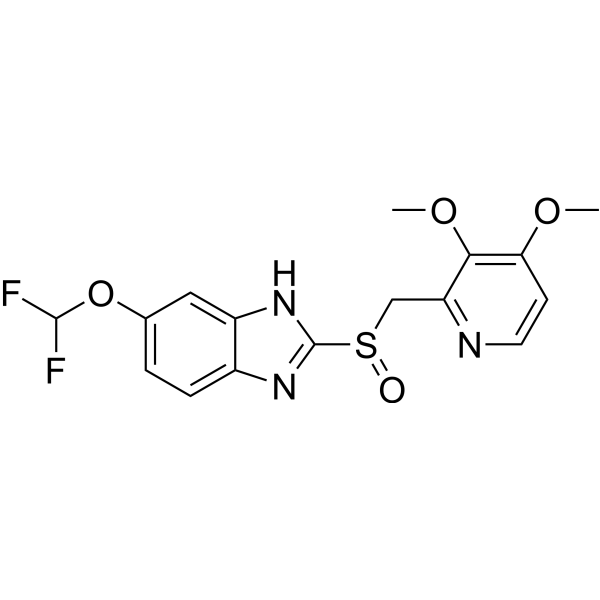
-
- HY-17507A
-
|
BY1023 sodium; SKF96022 sodium
|
Proton Pump
Autophagy
Apoptosis
Bacterial
|
Inflammation/Immunology
Cancer
|
|
Pantoprazole sodium (BY10232 sodium) is an orally active and potent proton pump inhibitor (PPI) . Pantoprazole sodium, a substituted benzimidazole, is a potent H +/K +-ATPase inhibitor with an IC50 of 6.8 μM. Pantoprazole sodium improves pH stability and has anti-secretory, anti-ulcer activities. Pantoprazole sodium significantly increased tumor growth delay combined with Doxorubicin (HY-15142) .
|
-

-
- HY-17507B
-
|
BY1023 sodium hydrate; SKF96022 sodium hydrate
|
Proton Pump
Autophagy
Apoptosis
Bacterial
|
Inflammation/Immunology
Cancer
|
|
Pantoprazole sodium hydrate (BY10232 sodium hydrate) is an orally active and potent proton pump inhibitor (PPI) . Pantoprazole sodium hydrate, a substituted benzimidazole, is a potent H +/K +-ATPase inhibitor with an IC50 of 6.8 μM. Pantoprazole sodium hydrate improves pH stability and has anti-secretory, anti-ulcer activities. Pantoprazole sodium hydrate significantly increased tumor growth delay combined with Doxorubicin (HY-15142) .
|
-
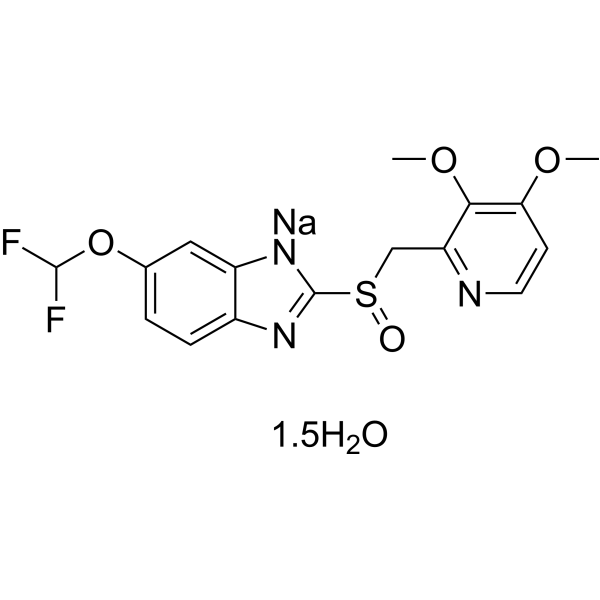
-
- HY-110077
-
|
|
Akt
Apoptosis
|
Cancer
|
|
API-1, a potent Akt/PKB inhibitor, binds to the PH domain and inhibits Akt membrane translocation. API-1 efficiently reduces the phosphorylation levels of Akt with an IC50 of ∼0.8 μM. API-1 is selective for PKB and does not inhibit the activation of PKC, and PKA. API-1 also induces apoptosis by synergizing with TNF-related apoptosis-inducing ligand (TRAIL) .
|
-
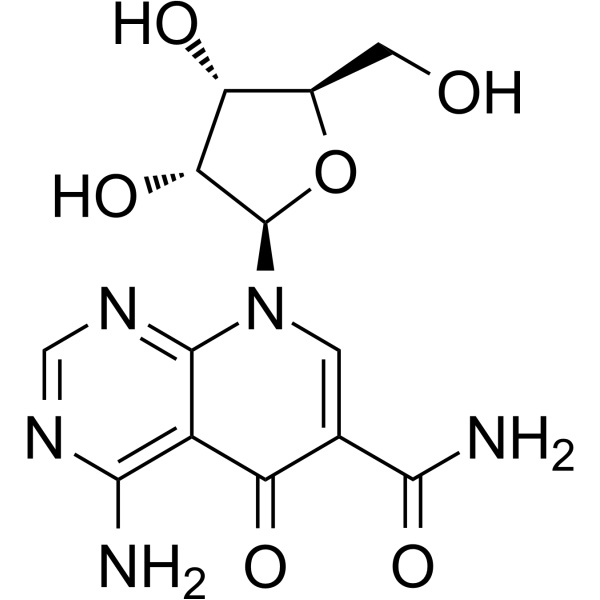
-
- HY-100007A
-
|
TAK-438 hydrochloride
|
Proton Pump
Bacterial
|
Infection
Endocrinology
|
|
Vonoprazan hydrochloride, a proton pump inhibitor (PPI), is a potent and orally active potassium-competitive acid blocker (P-CAB), with antisecretory activity. Vonoprazan hydrochloride inhibits H +,K +-ATPase activity in porcine gastric microsomes with an IC50 of 19 nM at pH 6.5. Vonoprazan hydrochloride is developed for the research of acid-related diseases, such as gastroesophageal reflux disease and peptic ulcer disease. Vonoprazan hydrochloride can be used for eradication of Helicobacter pylori .
|
-
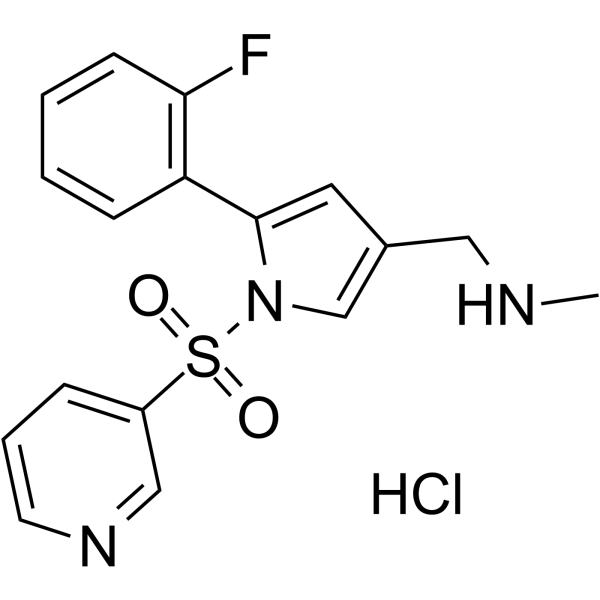
-
- HY-14818
-
|
R 125489
|
Influenza Virus
|
Infection
|
|
Laninamivir (R 125489) is a potent influenza neuraminidase (NA) inhibitor with IC50s of 0.90 nM, 1.83 nM and 3.12 nM for avian H12N5 NA (N5), pH1N1 N1 NA (p09N1) and A/RI/5+/1957 H2N2 N2 (p57N2), respectively .
|
-
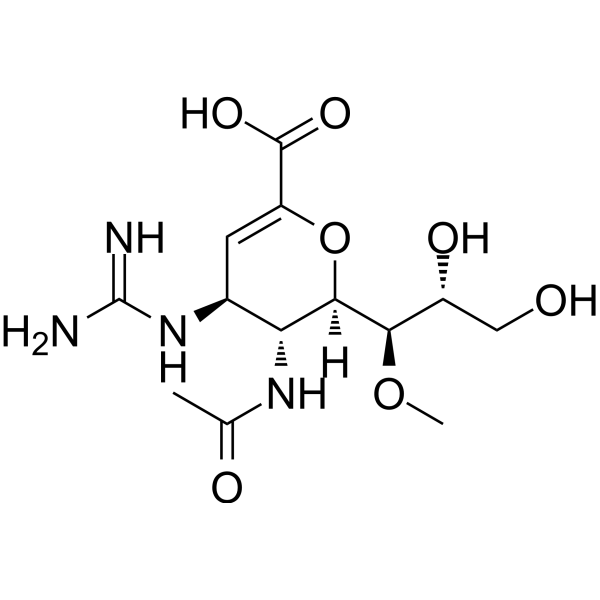
-
- HY-100007
-
|
TAK-438 free base
|
Proton Pump
Bacterial
|
Endocrinology
|
|
Vonoprazan (TAK-438 free base), a proton pump inhibitor (PPI), is a potent and orally active potassium-competitive acid blocker (P-CAB), with antisecretory activity. Vonoprazan inhibits H +,K +-ATPase activity in porcine gastric microsomes with an IC50 of 19 nM at pH 6.5. Vonoprazan is developed for the research of acid-related diseases, such as gastroesophageal reflux disease and peptic ulcer disease. Vonoprazan can be used for eradication of Helicobacter pylori .
|
-
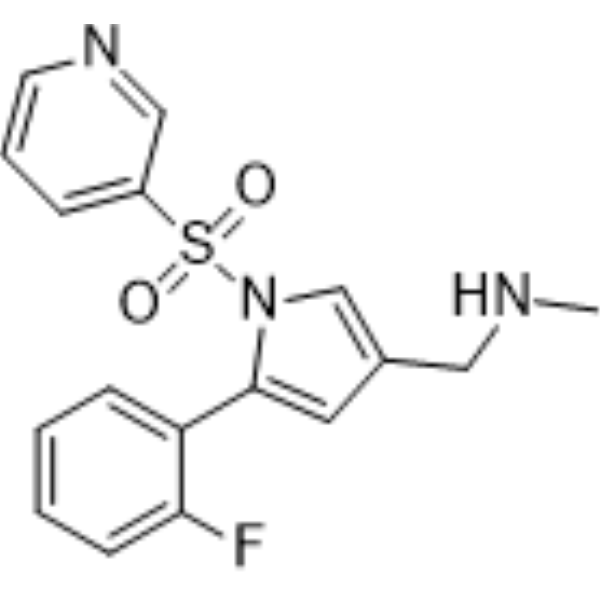
-
- HY-17507S
-
|
BY1023-d6; SKF96022-d6
|
Isotope-Labeled Compounds
Proton Pump
Autophagy
Apoptosis
|
Inflammation/Immunology
Cancer
|
|
Pantoprazole-d6 is deuterium labeled Pantoprazole. Pantoprazole (BY10232) is an orally active and potent proton pump inhibitor (PPI)[1]. Pantoprazole, a substituted benzimidazole, is a potent H+/K+-ATPase inhibitor with an IC50 of 6.8 μM. Pantoprazole improves pH stability and has anti-secretory, anti-ulcer activities. Pantoprazole significantly increased tumor growth delay combined with Doxorubicin (HY-15142)[3][4].
|
-

-
- HY-17507S1
-
|
BY1023-d3; SKF96022-d3
|
Isotope-Labeled Compounds
Proton Pump
Autophagy
Apoptosis
|
Inflammation/Immunology
Cancer
|
|
Pantoprazole-d3 is deuterium labeled Pantoprazole. Pantoprazole (BY10232) is an orally active and potent proton pump inhibitor (PPI)[1]. Pantoprazole, a substituted benzimidazole, is a potent H+/K+-ATPase inhibitor with an IC50 of 6.8 μM. Pantoprazole improves pH stability and has anti-secretory, anti-ulcer activities. Pantoprazole significantly increased tumor growth delay combined with Doxorubicin (HY-15142)[3][4].
|
-

-
- HY-128943
-
|
|
Drug-Linker Conjugates for ADC
|
Cancer
|
|
MAC glucuronide phenol-linked SN-38 is a pH-susceptible lactone MAC glucuronide phenol-linked SN-38 (DNA topoisomerase I inhibitor) agent linker. MAC glucuronide phenol-linked SN-38 is cytotoxic across L540cy cells and Ramos cells with IC50 values of 113 and 67 ng/mL, respectively.Albumin-coupled MAC glucosidol-linked SN-38 shows good stability in mouse plasma .
|
-
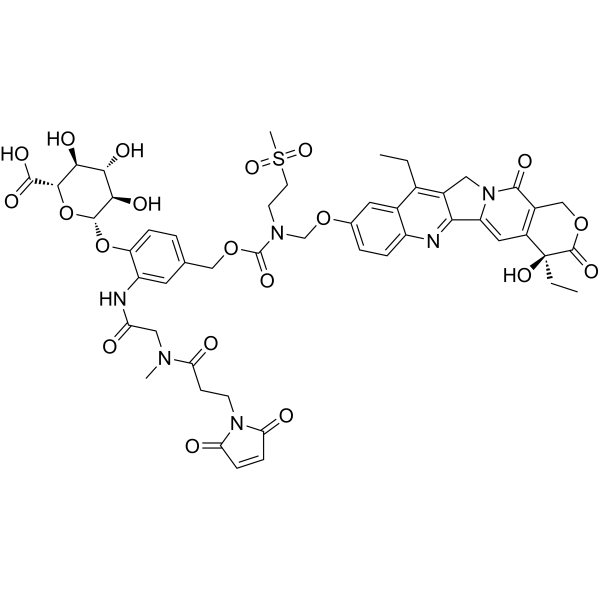
-
- HY-17507AR
-
|
BY1023 sodium (Standard); SKF96022 sodium (Standard)
|
Proton Pump
Autophagy
Apoptosis
Bacterial
|
Inflammation/Immunology
Cancer
|
|
Pantoprazole (sodium) (Standard) is the analytical standard of Pantoprazole (sodium). This product is intended for research and analytical applications. Pantoprazole sodium (BY10232 sodium) is an orally active and potent proton pump inhibitor (PPI) . Pantoprazole sodium, a substituted benzimidazole, is a potent H +/K +-ATPase inhibitor with an IC50 of 6.8 μM. Pantoprazole sodium improves pH stability and has anti-secretory, anti-ulcer activities. Pantoprazole sodium significantly increased tumor growth delay combined with Doxorubicin (HY-15142) .
|
-
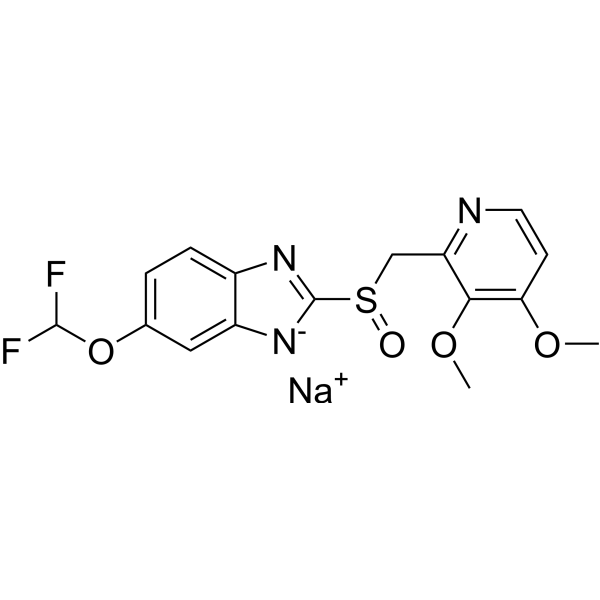
-
- HY-18071
-
BI-9627
1 Publications Verification
|
Na+/H+ Exchanger (NHE)
|
Cardiovascular Disease
|
|
BI-9627 is potent sodium-hydrogen exchanger isoform 1 (NHE1) inhibitor, with IC50s of 6 and 31 nM in intracellular pH recovery (pHi) and human platelet swelling assays, respectively. BI-9627 displays >30-fold selectivity against NHE2 and with no measurable inhibitory activity against the NHE3 isoform. BI-9627 shows low DDI (agent-agent interaction) potential, excellent pharmacokinetics in rat and dog, and remarkably potent activity in the isolated heart model of ischemia-reperfusion injury .
|
-
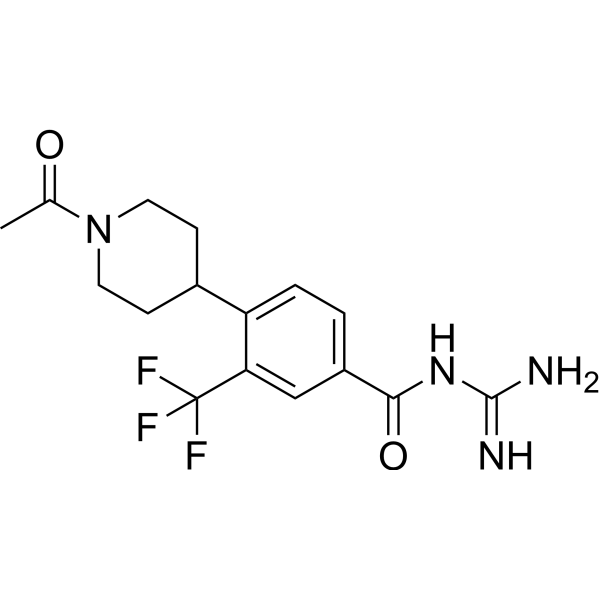
-
- HY-18071A
-
|
|
Na+/H+ Exchanger (NHE)
|
Cardiovascular Disease
|
|
BI-9627 hydrochloride is potent sodium-hydrogen exchanger isoform 1 (NHE1) inhibitor, with IC50s of 6 and 31 nM in intracellular pH recovery (pHi) and human platelet swelling assays, respectively. BI-9627 hydrochloride displays >30-fold selectivity against NHE2 and with no measurable inhibitory activity against the NHE3 isoform. BI-9627 hydrochloride shows low DDI (agent-agent interaction) potential, excellent pharmacokinetics in rat and dog, and remarkably potent activity in the isolated heart model of ischemia-reperfusion injury .
|
-
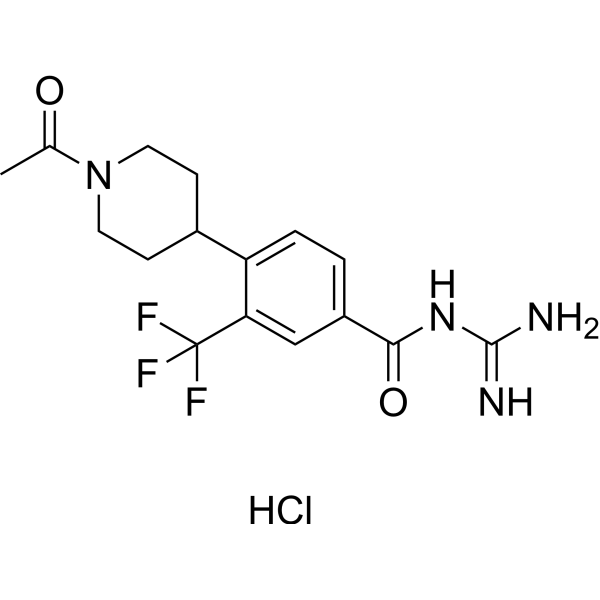
-
- HY-128067
-
|
Hexamethylene amiloride; HMA
|
Sodium Channel
HIV
Apoptosis
|
Infection
Cancer
|
|
5-(N,N-Hexamethylene)-amiloride (Hexamethylene amiloride) derives from an amiloride and is a potent Na +/H + exchanger inhibitor, which decreases the intracellular pH (pHi) and induces apoptosis in leukemic cells. 5-(N,N-Hexamethylene)-amiloride (Hexamethylene amiloride) is also an inhibitor of the HIV-1 Vpu virus ion channel and inhibits mouse hepatitis virus (MHV) replication and human coronavirus 229E (HCoV229E) replication in cultured L929 cells with EC50s of 3.91 μM and 1.34 μM, respectively .
|
-

-
- HY-147414
-
|
PF-114
|
Bcr-Abl
|
Cancer
|
|
Vamotinib (PF-114) is a potent, selective and orally active tyrosine kinase inhibitor. Vamotinib inhibits the autophosphorylation of BCR/ABL and BCR/ABL-T315I. Vamotinib induces apoptosis. Vamotinib shows anti-proliferative and anti-tumor activity. Vamotinib has the potential for the research of resistant philadelphia chromosome-positive (Ph+) leukemia. Vamotinib inhibits ABL series kinases with IC50s of 0.49 nM (ABL), 0.78 nM (ABL T315I), 9.5 nM (ABL E255K), 2.0 nM (ABL F317I), 7.4 nM (ABL G250E), 1.0 nM (ABL H396P), 2.8 nM (ABL M351T), 12 nM (ABL Q252H), and 4.1 nM (ABL Y253F), respectively . Vamotinib is a click chemistry reagent, it contains an Alkyne group and can undergo copper-catalyzed azide-alkyne cycloaddition (CuAAc) with molecules containing Azide groups.
|
-

-
-
HY-L0116V
-
|
|
1,065 compounds
|
|
Macrocycles are promising scaffolds for the design of novel RNA targeting molecules. This collection of macrocycles for RNA consists of very diverse, drug-like molecules which incorporate certain known RNA-recognition elements (e.g. nucleobase ring systems and analogs) distributed within macrocyclic rings or peripheral fragments. As macrocyclic molecules tend to be larger than traditional screening molecules, it is vital to carefully assess and control their physicochemical properties. All macrocycles have been tested for aqueous and DMSO solubility with cutoffs applied at 10 mM in DMSO and 50 µM in PBS (pH 7.4); PAMPA permeability has also been tested for representative set of macrocycles.
|
-
-
HY-L0115V
-
|
|
10,091 compounds
|
|
ASINEX has elaborated a library of diverse macrocycles using an effective tool box of synthetic methods. The resulting scaffolds are novel, tremendously diverse, medchem-relevant, macrocyclic frameworks.
Macrocyles tend to be larger than traditional screening molecules which make them perfect discovery tools for targets with shallow or extended binding sites. At the same time, their unique character based on restricted flexibility and ability to form intra-molecular hydrogen bonds allows for design approaches effectively optimizing properties such asaqueous solubility and membrane permeability. Many of these macrocycles have been tested for aqueous and DMSO solubility with cut-offs applied at 10 mM in DMSO and 50 µM in PBS (pH 7.4) followed by PAMPA permeability assay.
|
| Cat. No. |
Product Name |
Type |
-
- HY-B1610J
-
|
|
Biochemical Assay Reagents
|
|
Sodium citrate buffer, 0.5M, pH 5.0, is a commonly used buffer with main components are citric acid and sodium hydrogen phosphate. Sodium citrate buffer, 0.5M, pH 5.0 is used in heat induced epitope retrieval (HIER) methods to reverse the loss of antigenicity that occurs with some epitopes in formalin-fixed paraffin embedded tissues. Sodium citrate buffer, 0.5M, pH 5.0 is the preferred solution for most antibodies . Sodium citrate buffer, 0.5M, pH 5.0 is used as solution for captisol in animal tumor models .
|
-
- HY-D0876
-
|
|
Biochemical Assay Reagents
|
|
POPSO is a zwitterionic buffer, increases osmolality and shows marked inhibition of anion uniport. POPSO inhibits chloride uniport with an IC50 value of 24 mM. POPSO enhances copper uptake and toxicity in alga, impairs mitochondrial inner membrane. The working pH range of POPSO sesquisodium salt is 7.2-8.5 .
|
| Cat. No. |
Product Name |
Target |
Research Area |
-
- HY-P5174
-
|
|
Sodium Channel
|
Neurological Disease
|
|
MitTx is a complex formed by MitTx-α and MitTx-β. MitTx is an ASIC1 channel activator with EC50 values of 9.4 and 23 nM for ASIC1a and ASIC1b isoforms, respectively. MitTx is highly selective for ASIC1 isoforms at neutral pH. Under acidic conditions, MitTx greatly enhances proton-evoked ASIC2a channel activation .
|
-
- HY-P5780
-
|
|
Sodium Channel
|
Neurological Disease
|
|
π-TRTX-Hm3a is a 37-amino acid peptide isolated from Togo starburst tarantula (Heteroscodra maculata) venom. π-TRTX-Hm3a pH-dependently inhibits acid-sensing ion channel 1a (ASIC1a) with an IC50 of 1-2 nM and potentiates ASIC1b with an EC50 of 46.5 nM .
|
| Cat. No. |
Product Name |
Category |
Target |
Chemical Structure |
-
- HY-N2383
-
|
(1R,2S,3S,4S,6R)-4-Amino-6-(hydroxymethyl)cyclohexane-1,2,3-triol
|
Structural Classification
Microorganisms
Ketones, Aldehydes, Acids
Source classification
|
Glucosidase
|
|
Validamine competitively inhibits β-glucosidase in a pH-dependent and dose-dependent manner, with an IC50 value of 2.92mM, and the maximum inhibitory ability is at the optimum pH value of this enzyme .
|
-

-
- HY-N8502
-
-

| Cat. No. |
Product Name |
Chemical Structure |
-
- HY-17507S
-
|
|
|
Pantoprazole-d6 is deuterium labeled Pantoprazole. Pantoprazole (BY10232) is an orally active and potent proton pump inhibitor (PPI)[1]. Pantoprazole, a substituted benzimidazole, is a potent H+/K+-ATPase inhibitor with an IC50 of 6.8 μM. Pantoprazole improves pH stability and has anti-secretory, anti-ulcer activities. Pantoprazole significantly increased tumor growth delay combined with Doxorubicin (HY-15142)[3][4].
|
-

-
- HY-17507S1
-
|
|
|
Pantoprazole-d3 is deuterium labeled Pantoprazole. Pantoprazole (BY10232) is an orally active and potent proton pump inhibitor (PPI)[1]. Pantoprazole, a substituted benzimidazole, is a potent H+/K+-ATPase inhibitor with an IC50 of 6.8 μM. Pantoprazole improves pH stability and has anti-secretory, anti-ulcer activities. Pantoprazole significantly increased tumor growth delay combined with Doxorubicin (HY-15142)[3][4].
|
-

Your information is safe with us. * Required Fields.
Inquiry Information
- Product Name:
- Cat. No.:
- Quantity:
- MCE Japan Authorized Agent:


















































